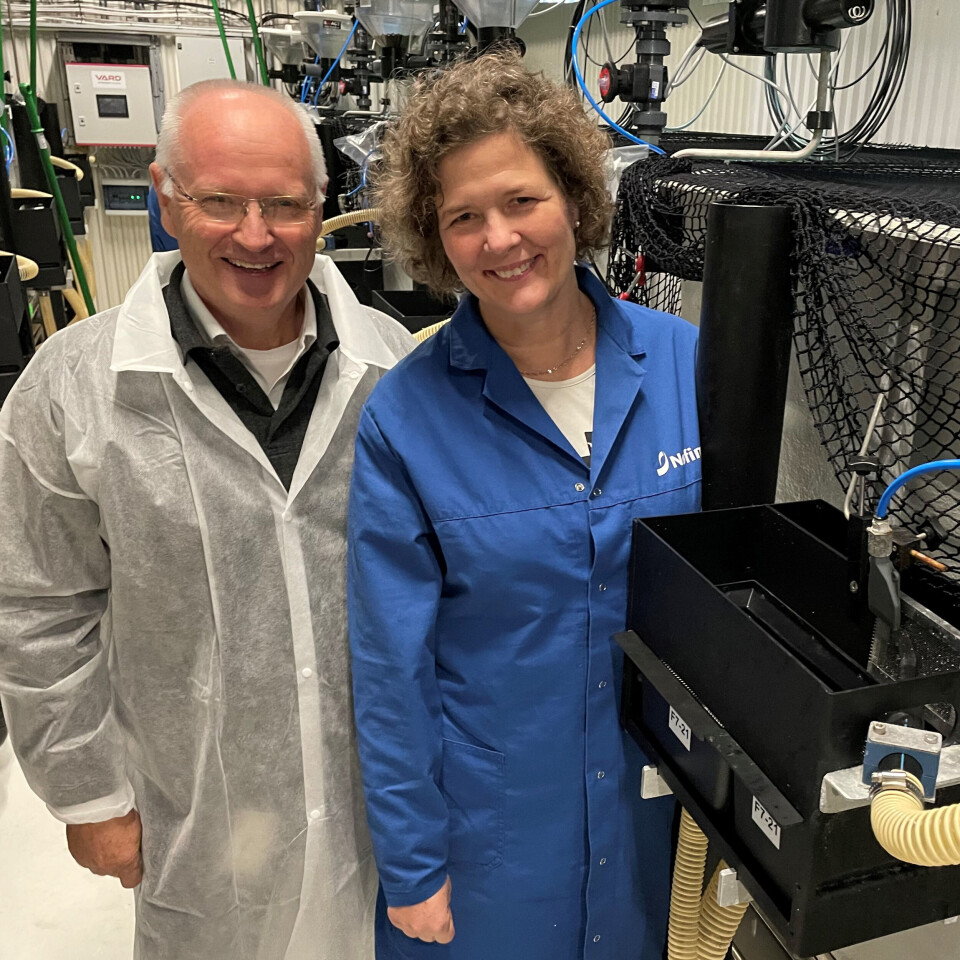
The research tool that could cut fish farm feed costs
Scientists have developed a way to separate uneaten feed from faeces in land-based systems, improving research and potentially stopping the waste of an expensive resource. It is now being developed for commercial sale.
A tool that separates uneaten fish feed from sludge in land-based fish farms so that it can be re-used is to be adapted for commercial sale after being developed by Norwegian research institute Nofima.
Around 10% of fish feed goes to waste in land-based aquaculture facilities. This feed then mixes with fish faeces in the drainage system and creates sludge.
Nofima’s invention, which has been given the preliminary name of ‘spill box’, separates uneaten feed from the wastewater so it can be recycled back to the salmon.
Aquaulture supplier Vard Aqua is now developing Nofima’s invention for commercial sale.
Resource utilisation
“We are very pleased that we get the chance to collaborate with technology suppliers like Vard Aqua, so that they can take our research tool and develop it on a commercial scale. Economy and resource utilisation will be the major advantages of the spill box for industry actors,” said Kjell-Åge Rognli, director of business development at Nofima.
If the commercialisation of the spill box goes as Rognli hopes, it can contribute to virtually zero feed waste in a land-based facility, although that was not the original motivation for the invention of the device.
For many years, scientists have wanted to improve the method for measuring the digestibility of feed in research. In farmed fish, it is much more difficult to measure feed intake and the exact digestibility of feed than in land animals, where faeces can be collected from the ground and feed residues can be removed from the feed trough. When it comes to fish, everything is mixed in the water.
Therefore, scientists wanted an improved tool for collection and separation of feed and faeces.
Pellets bounce, sludge sticks
Firstly, they tried using a separator that used centrifugal force for sorting particles, but this didn’t work well enough. The researchers then moved to filtration, where they tested out different grates, objects and shapes beneath the flow of water.
They concluded that something vertical had to be involved, where the water enters from the side, and found a solution that utilised the “bounce” in the feed pellet versus the stickier properties of the faeces. This allowed the scientists to separate feed and faeces into different fractions.
The spill box has three obvious advantages when it comes to research.

“We hope the spill box will make accurate measurements, and give our research technicians an easier working day, and the fish do not have to be handled,” said Nofima’s Turid Synnøve Aas, who is the project manager and one of the scientists behind the development, along with research technician Frode Nerland and recently retired scientist Torbjørn Åsgård.
The fact that the fish do not have to be handled also means that scientists can take more frequent samples because they do not have to worry about harming the fish. It results in better research.
Optimising feed pellets
The question of how recovered feed can be re-used is something Vard Aqua will develop further, but Aas is confident that a feed can be made that is robust enough to be re-used after immersion.
“The feed will need a certain water stability to withstand some time in water. When testing in our research facilities, the feed is out of the water after a few minutes,” said Aas, who added that it was likely to be in the water for longer in commercial facilities.
“But it will not require an extreme feed quality, it is more an optimisation. When we do fish trials with measurement of feed intake with our existing/previous method, the feed spill is collected over 24 hours in a collector where it is exposed to water during the whole collection period.
“Not all feeds can withstand 24 hours of water exposure, but the time in water with this new device is much shorter than that. We do not assume the water stability of the pellet will be a very big problem to solve.
“We have an ongoing study of this, to produce feed suitable for recirculation to the tanks. We also want to see if we can achieve a consistency in the fish's faeces that also makes it even better suited to collection.”




















































